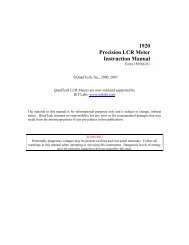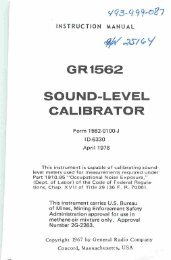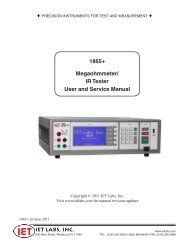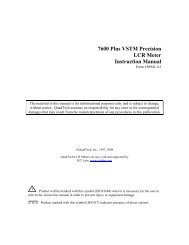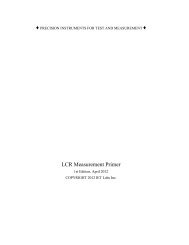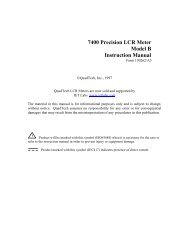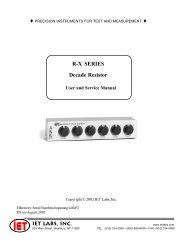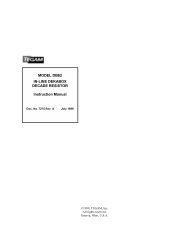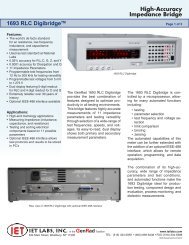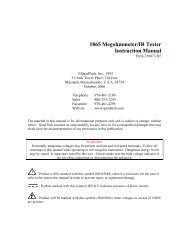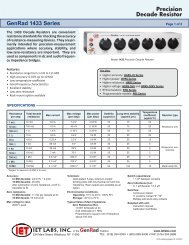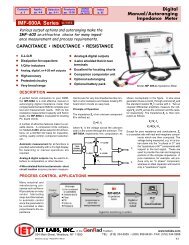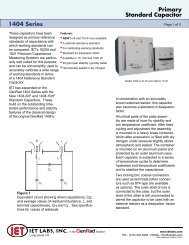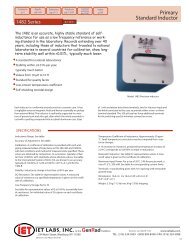Handbook of High Speed Photography - IET Labs, Inc.
Handbook of High Speed Photography - IET Labs, Inc.
Handbook of High Speed Photography - IET Labs, Inc.
Create successful ePaper yourself
Turn your PDF publications into a flip-book with our unique Google optimized e-Paper software.
Section 6.4. Photo- and reluctance-pickup triggering are best for this<br />
purpose. Strobe synchronization derived from the film transport is use<br />
ful for both transient and repetitive studies.<br />
Figure 6-4. Ring winding yarn on textile spindle at 10,500 rpm. Camera<br />
framing rate is approximately 16 frames-per-second.<br />
As the motor speed is usually variable on high-speed cameras,<br />
it may be practical to use this control to synchronize each frame with<br />
a given position <strong>of</strong> the subject and thus to take movies that show a<br />
moving object or operation as if stopped or moving in slow motion. At<br />
higher speeds this technique may be unsatisfactory, as much <strong>of</strong> the lim<br />
ited film capacity <strong>of</strong> the camera is wasted while film transport is ac<br />
celerating and the operator adjusts the speed.<br />
It is usually a simple matter to disable the shutter <strong>of</strong> a high<br />
speed camera or lock it in the open position and then rely completely<br />
upon the stroboscope for effective shuttering. Such unsynchronized<br />
shutterless camera operation, with the flash rate set by the strobo<br />
scope's internal oscillator is useful for studies <strong>of</strong> both repetitive and<br />
62



